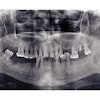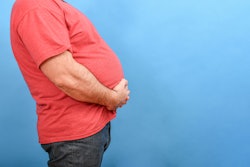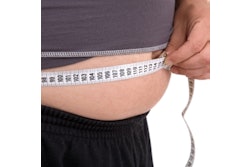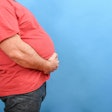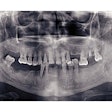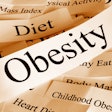Obesity indicators, including the weight-adjusted waist index (WWI) and waist-to-height ratio (WtHR), may positively correlate with periodontitis and vary with age, according to a large study published in Scientific Reports.
Furthermore, body mass index (BMI) did not appear to be associated with periodontitis, the authors wrote.
"In the total population, the higher the WWI and WtHR, the higher the risk of periodontitis," wrote the authors, led by XingJin Chen of Zunyi Medical University in China (Sci Rep, January 3, 2025, Vol. 15, 697).
The study used U.S. National Health and Nutrition Examination Survey (NHANES) 2009-2014 data, including demographic, dietary, examination, laboratory, and questionnaire data. Only participants age 30 or older with at least one natural tooth underwent periodontal exams, they wrote.
A total of 10,289 participants were analyzed for WWI and periodontitis, 10,600 for BMI and periodontitis, and 10,290 for WtHR and periodontitis, with the measures defined as WWI = waist circumference/weight (cm/kg), BMI = weight/height² (kg/m²), and WtHR = waist circumference/height (cm/cm).
Multiple logistic regression showed significant positive associations between WWI and WtHR with periodontitis, while BMI was not associated. For WWI, the crude model (odds ratio [OR] = 1.52; 95% confidence interval [CI], 1.44-1.60; p < 0.001), least adjusted model (OR = 1.54; 95% CI, 1.45-1.64; p < 0.001), and fully adjusted model (OR = 1.35; 95% CI, 1.26-1.45; p < 0.001) all confirmed this correlation, they wrote.
Similarly, WtHR showed a positive correlation in the fully adjusted model (OR = 2.94; 95% CI, 1.57-5.50; p < 0.001). Sensitivity analysis using categorical variables revealed that participants in the highest quartile of WWI had a 61% higher risk of periodontitis (OR = 1.61; 95% CI, 1.38-1.88; p < 0.001) and those in the highest quartile of WtHR had a 35% higher risk (OR = 1.35; 95% CI, 1.15-1.59; p < 0.001). However, BMI showed no significant association.
A U-shaped relationship between WWI and periodontitis was observed in participants over the age of 60, with the lowest risk at a WWI of 12.68 (cm/kg). Beyond this inflection point, the risk of periodontitis increased nearly eightfold (OR = 7.87; 95% CI, 1.76-35.20; p = 0.007), with a significant log likelihood-ratio test (p = 0.002). For WtHR, the risk of periodontitis increased with higher WtHR in participants under 60 but decreased in those over 60, while BMI showed no significant age-related differences, they wrote.
The study, however, had limitations. Participants over the age of 30 with at least one natural tooth were included, potentially underestimating periodontitis prevalence and deviating from the true population condition, the authors wrote.
"This cross-sectional NHANES-based study exposed a positive correlation between WWI, WtHR and periodontitis, but the relationship between BMI and periodontitis was not statistically significant," they concluded.




